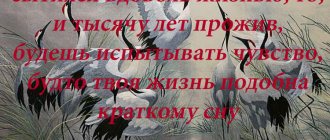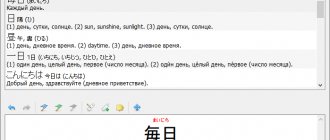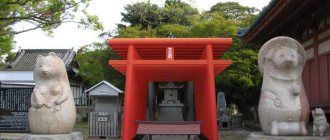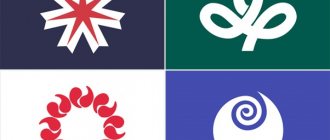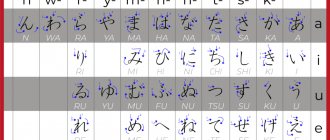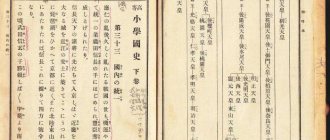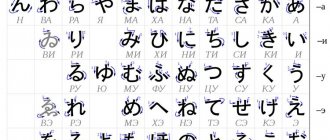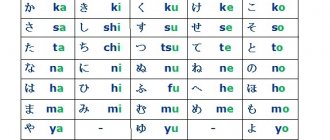Read what interests you
In this series, we looked at the three main systems for writing Japanese text, from hiragana and katakana to kanji.
To read Japanese, you need to learn them, but that's not all. You can memorize kanji and count the number of characters you have mastered, and learn all 2,000 joyo-kanji needed for basic literacy, but none of this automatically ensures the ability to read Japanese text fluently. Ultimately, there is no substitute for reading itself. To improve reading skills, at first short passages from language textbooks are sufficient, but over time it is time to move on to texts written for native speakers. With so much reading material available, it can be difficult to decide where to start. When choosing, you should consider one important factor - your motivation, that is, what will really make you read and want to learn more. Based on this, it is worth choosing the level of complexity of the text, since an overly complicated text can reduce interest, which will affect learning outcomes.
One effective way is to choose the same types of materials that you enjoy reading in your native language, be it news or other articles, comics, games, fiction or non-fiction. For example, on my own path to free reading, I spent a lot of time poring over the mysteries of novels by Keigo Higashino and Haruki Murakami. Since everyone's personal preferences are different, it's difficult to give specific advice that will suit everyone, but here are a few ideas for navigating the seas of available material.
How to find your level?
One way is to follow social media accounts that match your interests. On Twitter, for example, you can see an endless stream of short texts that sometimes act as recommendations for longer articles. When you don't know where to start, browsing social media like this can help you find Japanese websites that you'll want to read more often. Some users may use online slang that is too obscure, but there are accounts that use simple Japanese for students, such as @yasashiinews. The NHK News Web Easy website is also a good source of up-to-date news written in simpler language.
As for printed reading materials, they can be difficult and expensive to obtain outside of Japan, but for those living in the country there are a huge selection of options at a better price than materials aimed at foreign students - the only problem is to choose the one that suits your level. Different books are aimed at different grade levels in elementary school, and I used them as a rough guide early on. I've also found that paperback bunkobon books are better for teaching because they tend to have the pronunciation of the rarer kanji written next to them in kana (furigana), while tankobon, the hardcover books, usually don't have such notes.
Fast and slow reading
Reading for study can be divided into two different types. One is intensive reading to fully understand a relatively short and complex text, carefully checking unknown vocabulary in the dictionary. This type of reading is most often found in the classroom, where questions to check understanding are frequently asked. Translating the text also requires careful reading.
The other type, fluency reading, requires a broad understanding of a relatively longer but simple text that is read without stopping for analysis, it is associated with reading for pleasure. It has the advantage of increasing the amount of data received, allowing the reader to naturally assimilate vocabulary in context. Intensive reading, on the other hand, makes it possible to master words and phrases that require more effort to learn. Combining these two approaches to training will allow you to get the best results.
Some studies show that reading and learning fluently requires 98% text comprehension. Before diving into a book that looks interesting to you, you can assess your level of understanding of the text by counting the number of unfamiliar words on the first page and roughly determining their percentage of the total. This is, of course, very general advice, but if you don't know 10% or more of the words in the text, the book may be too difficult for skimming and more suitable for intensive reading.
Tokyo is the capital of Japan
Of course the language of Japan is Japanese. The capital city and largest city in Japan is Tokyo which is a huge bustling world-class city with a population of about 9 million. That's just in the core of the city center, but if you include the entire metropolitan area surrounding Tokyo the total population is about 37.8 million, making it the most populous metropolitan area in the world. The Tokyo area is absolutely massive and it's not uncommon for people to spend 4 hours a day on a train commuting to work or school. God forbid you try to catch the last train of the night out of Tokyo!
Of course, the language in Japan is Japanese. The capital and largest city of Japan is Tokyo, which is a huge, bustling, world-class city with a population of approximately 9 million people. That's just in the city center, but if you include the entire metropolitan area around Tokyo, the total population is about 37.8 million. It is the most populous metropolis in the world. The Tokyo area is very massive and it is not uncommon for people to spend 4 hours a day on the train taking them to work or school. God forbid you miss the last night train from Tokyo!
Stay motivated
During intermediate language learning, many people experience a plateau as the feeling of rapid progress at the beginner level is replaced by a feeling of slowing progress in learning. This is where it makes sense to look beyond textbooks and find something more challenging to read, and for busy adult learners, it can be a challenge through trial and error to find a consistent source of reading material that is both interesting and appropriate for their level of knowledge (this I speak from personal experience).
So, in closing, I will reiterate the importance of motivation. Reading in general introduces you to many different grammatical structures that are difficult to remember out of context. I liked Higashino mysteries and later found that they helped me understand a wide variety of texts in my professional life, from corporate reports to political articles, and I think it's better to read mostly what you like and what motivates you than worry about what you “need” to read.
Population density
Japan has a total size of 377,900 square kilometers. It's slightly bigger than Germany, and slightly smaller than Zimbabwe. And it's about 3.8% the size of Canada. That's despite the fact that its population is 370% the size of the Canada's population that means that Japan's population density is 9825 times that of Canada.
Japan has a total area of 377,900 square kilometers. This is slightly larger than Germany and slightly smaller than Zimbabwe. And that's about 3.8% of the size of Canada. This is despite the fact that Japan's population is 370% of Canada's, meaning Japan's population density is 9,825 times higher than Canada's.
Useful resources
We can recommend a set of suggested resources - it is not exhaustive and is focused mainly on news and books (mainly fiction).
Simple Japanese (Yasashii Nihongo) online:
NHK News Web Easy
Matcha (mostly travel articles)
Withnews (Yasashii Nihongo series) and their Twitter account @yasashiinews
Hukumusume (a site with Japanese fairy tales, legends and other stories for every day of the year)
News sites:
Nippon.com has a page in Japanese. Most of our articles appear first in Japanese and are then translated into English and other languages. At the top of the article, you can click the 日本語 link in the language list to view this article in Japanese.
Yahoo News and NHK News (you can find popular articles in the [ランキング] ranking).
Newspapers:
Printed editions of daily newspapers such as the Yomiuri Shimbun and Asahi Shimbun are especially good for people who like to write in the text while studying. The newspapers are not simplified, but they adhere to standard Japanese, which makes them easier to read.
Children's books:
If you're in Japan, I'd recommend browsing the children's section of a bookstore (although amid the coronavirus, precautions should be taken when visiting stores to avoid the risk of infection). If you find an author or publisher you like, it will be easier for you to choose your next book. I would recommend the Popura Poketto Bunko (ポプラポケット文庫) editions because of their range of fiction and non-fiction and their clear indication of the level of reading skills required on the cover.
Additional training materials:
Different books can be a good option to improve your vocabulary on different topics. For example, in the "Society" (社会, shakai) section of the store you will find books on geography and history, or you can brush up on your knowledge in the "Science" (理科; rika) section. You might want to try くらべてわかるできる子図鑑 (Kurabete wakaru dekiru ko zukan) for students preparing for the high school entrance exams - browse the different sections to find what you like. By the way, the official study guides 漢検漢字学習ステップ (Kanken Kanji Gakushu Sutheppu) for the Japanese Kanji Proficiency Test can be surprisingly good for practicing intensive reading of short sentences.
Hiragana alphabet, Japanese language, Korsakova E.V., 2015
Hiragana alphabet, Japanese language, Korsakova E.V., 2015. The proposed textbook is a workbook for learning the Hiragana alphabet, one of the syllabary alphabet of the Japanese language. The manual graphically presents the order of writing the features of the Hiragana alphabet characters, which helps students master the skills of correct writing. In addition, the manual presents language exercises to strengthen writing skills. The publication is intended for a wide range of people beginning to study Japanese writing, first-year students of the Japanese language, students of schools and language courses, as well as individuals studying Japanese on their own. RECOMMENDATIONS FOR TEACHERS. The purpose of this textbook is to develop writing skills (Hiragana alphabet) in students who are starting to master Japanese writing. Since native Japanese words vago are written in the hiragana alphabet and the use of this alphabet in Japanese writing is more frequent than the katakana alphabet, it is considered advisable to begin learning to write in Japanese by mastering the signs of the hiragana alphabet. The use of this teaching aid is effective regardless of the age of the students. When studying in primary and secondary schools, as well as as part of Japanese language courses for children, it is recommended to master the characters of the Hiragana alphabet in series, that is, devote one academic hour to mastering the five characters of the Hiragana alphabet. In the case of classes in senior secondary schools, in student audiences of non-linguistic faculties and as part of language courses for adults, it is possible to present up to three rows of the alphabet in one lesson (15 characters). For students of language departments, to master all the characters of the Hiragana alphabet, it is advisable to set aside two weeks, during which students perform a large number of exercises to develop writing skills, learn to recognize and write the characters of the Hiragana alphabet, read words and educational texts written in the Hiragana alphabet.
Download the e-book for free in a convenient format, watch and read: - fileskachat.com, fast and free download.
Below you can buy this book at the best price with a discount with delivery throughout Russia. Buy this book
How to open a file
Copyright holders
- djvu - Yandex.Disk. - pdf - Yandex.Disk.
Publication date: 01/20/2021 06:38 UTC
Japanese language textbook :: Japanese language :: Korsakova
See also textbooks, books and educational materials:
- Katakana alphabet, Japanese language, E.V. Korsakova, 2013
- Japanese language for beginners, Workshop, Burakova A.A., 2015
- Textbook on military translation, Japanese language, Volkov L.G., Maslov D.A., Seredenko V.M., 2016
- Grammar of the Japanese language, Introduction, Phonology, Supraphononology, Morphonology, Alpatov V.M., Vardul I.F., Starostin S.A., 2000
The following textbooks and books:
- Japanese language without a tutor, Japanese language tutorial, Syshchikova A.N., 2019
- 1000 basic characters of the Japanese language, Nadezhkina N.V., 2018
Previous articles:
- Introduction to hieroglyphics, Eirich S.V., 2012
- Japanese for Beginners, Yoshida Yasuo, 2011
- Hieroglyphic minimum of the Japanese language in tasks and exercises, Strugova E.V., 2015
- Self-instruction manual for reading Japanese characters, Walsh L., 2001
Next article >>

